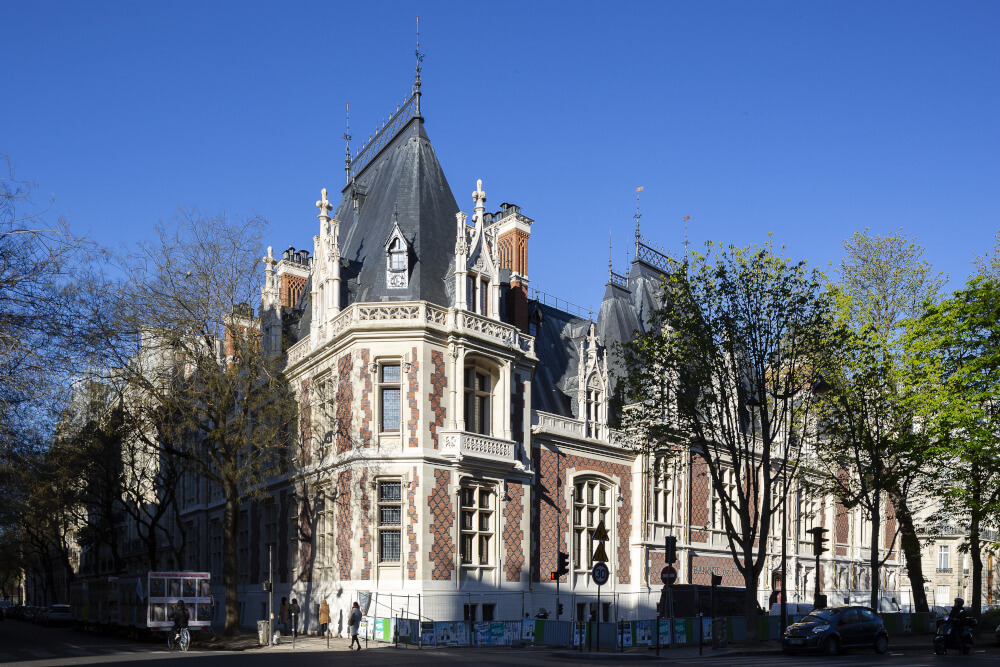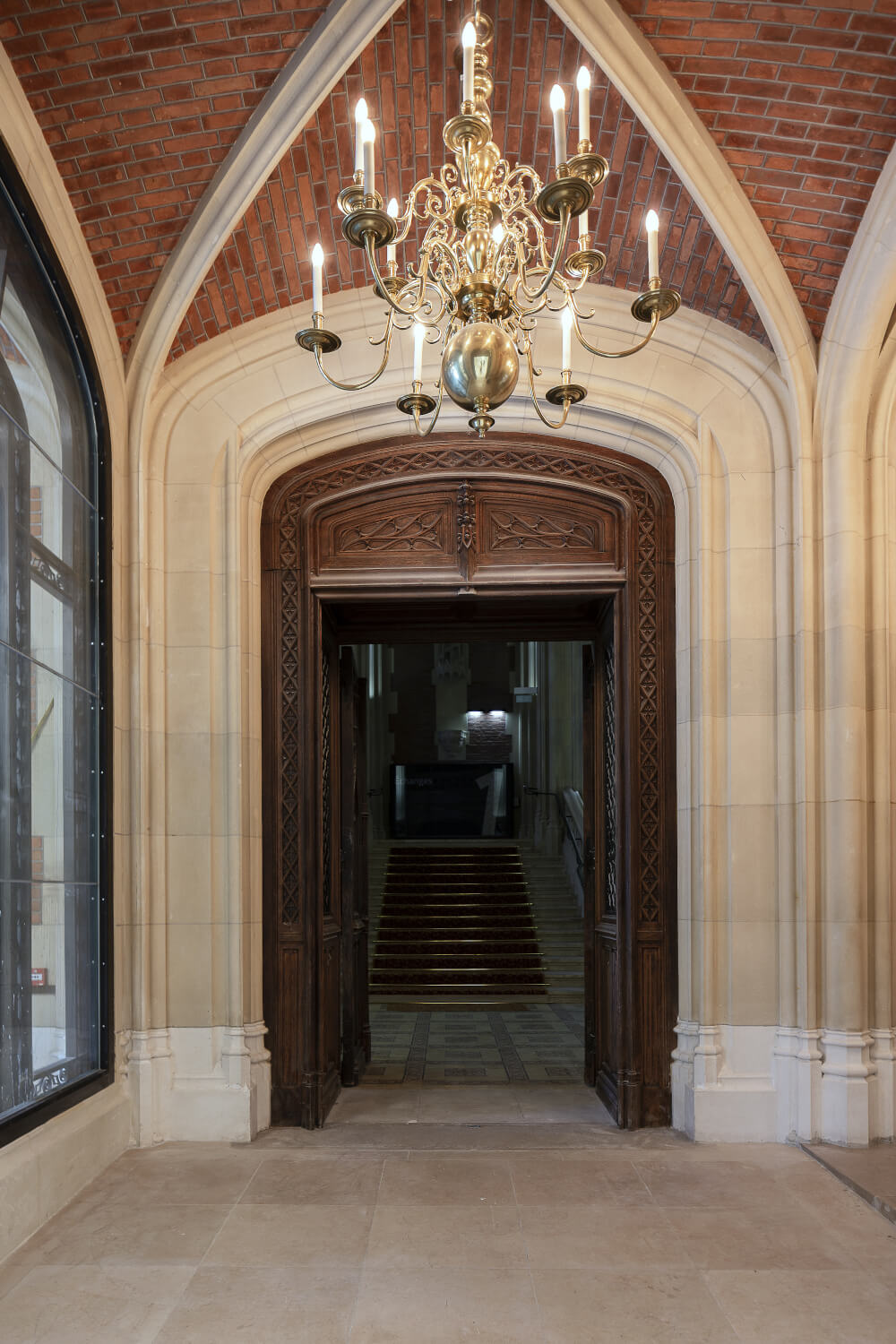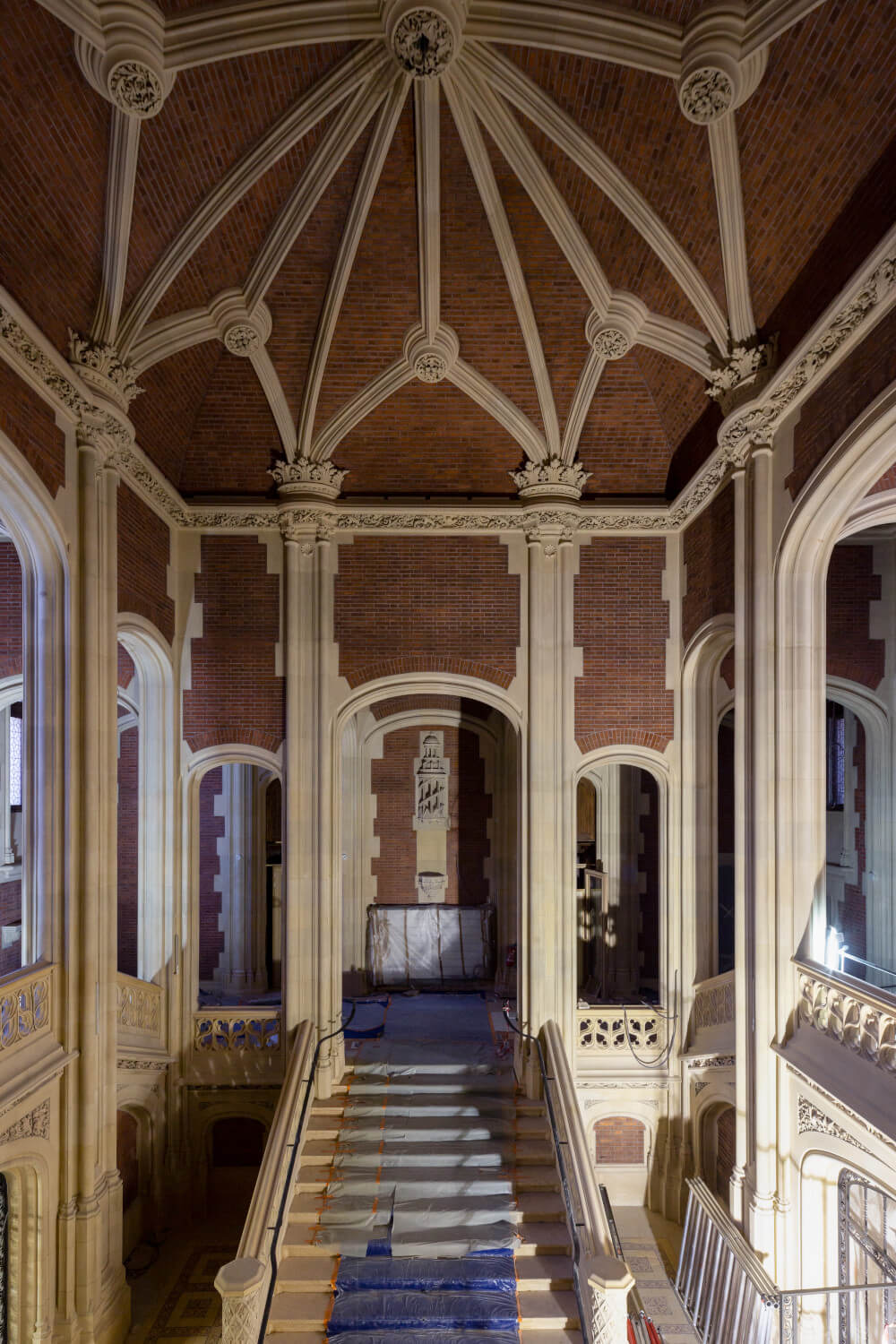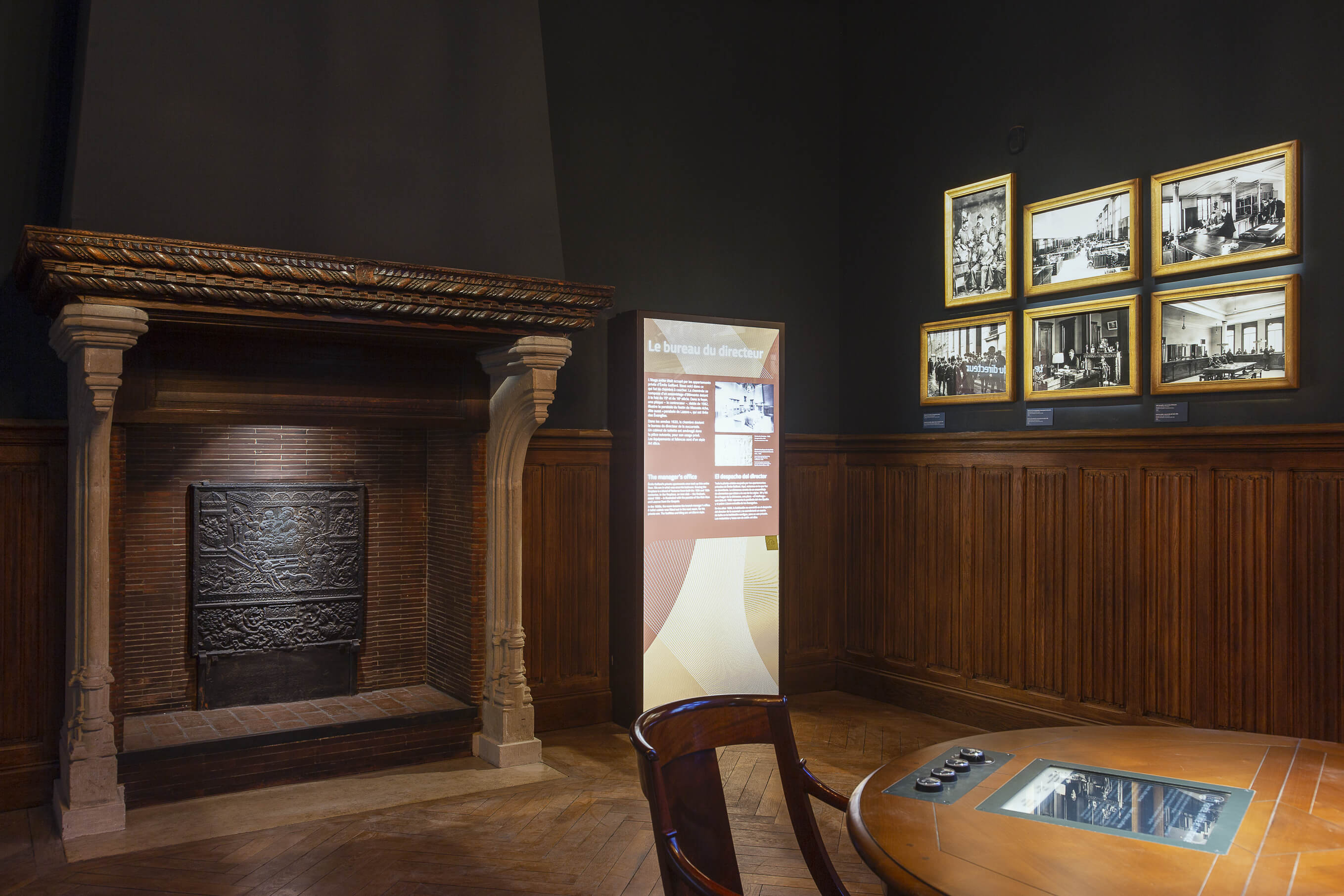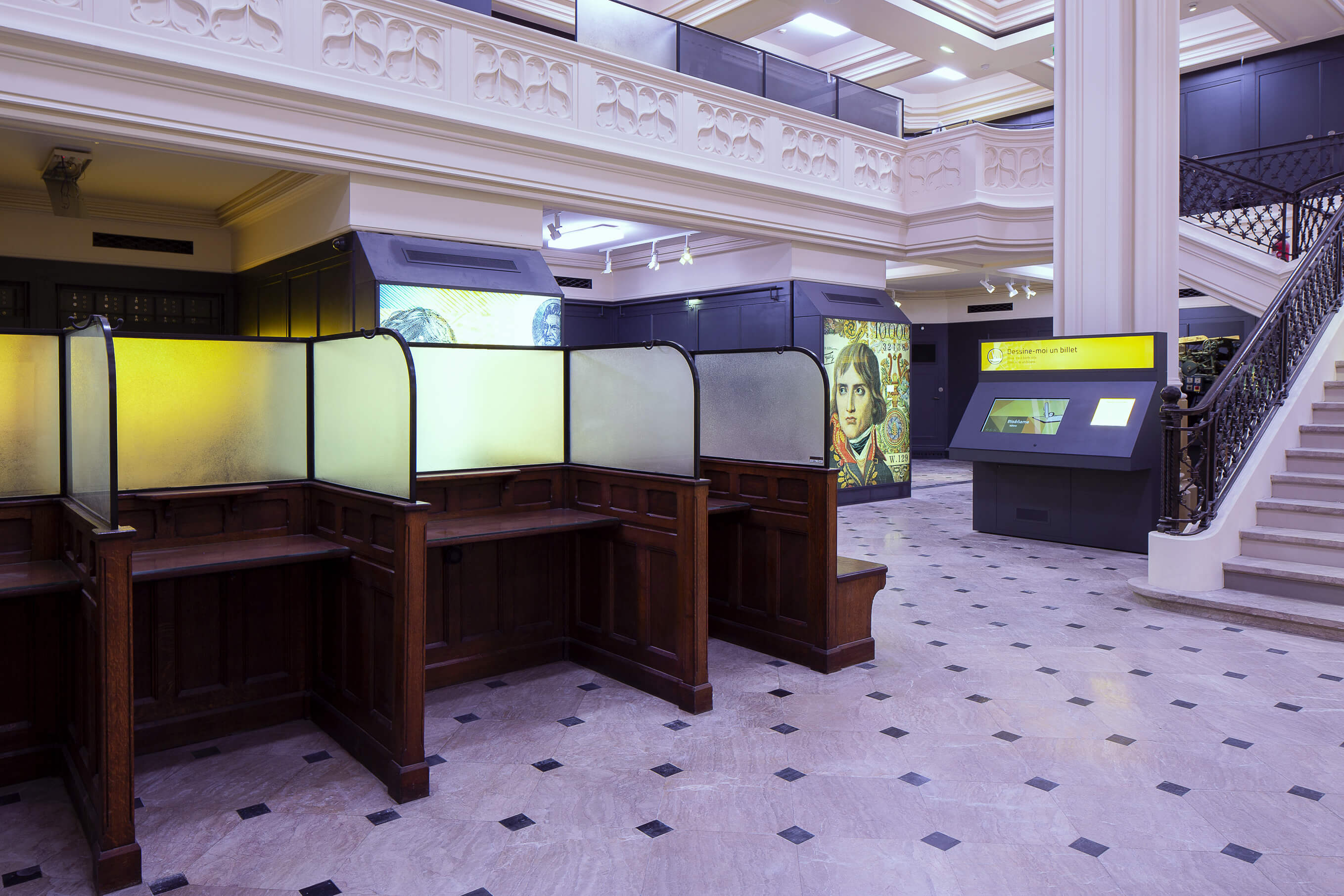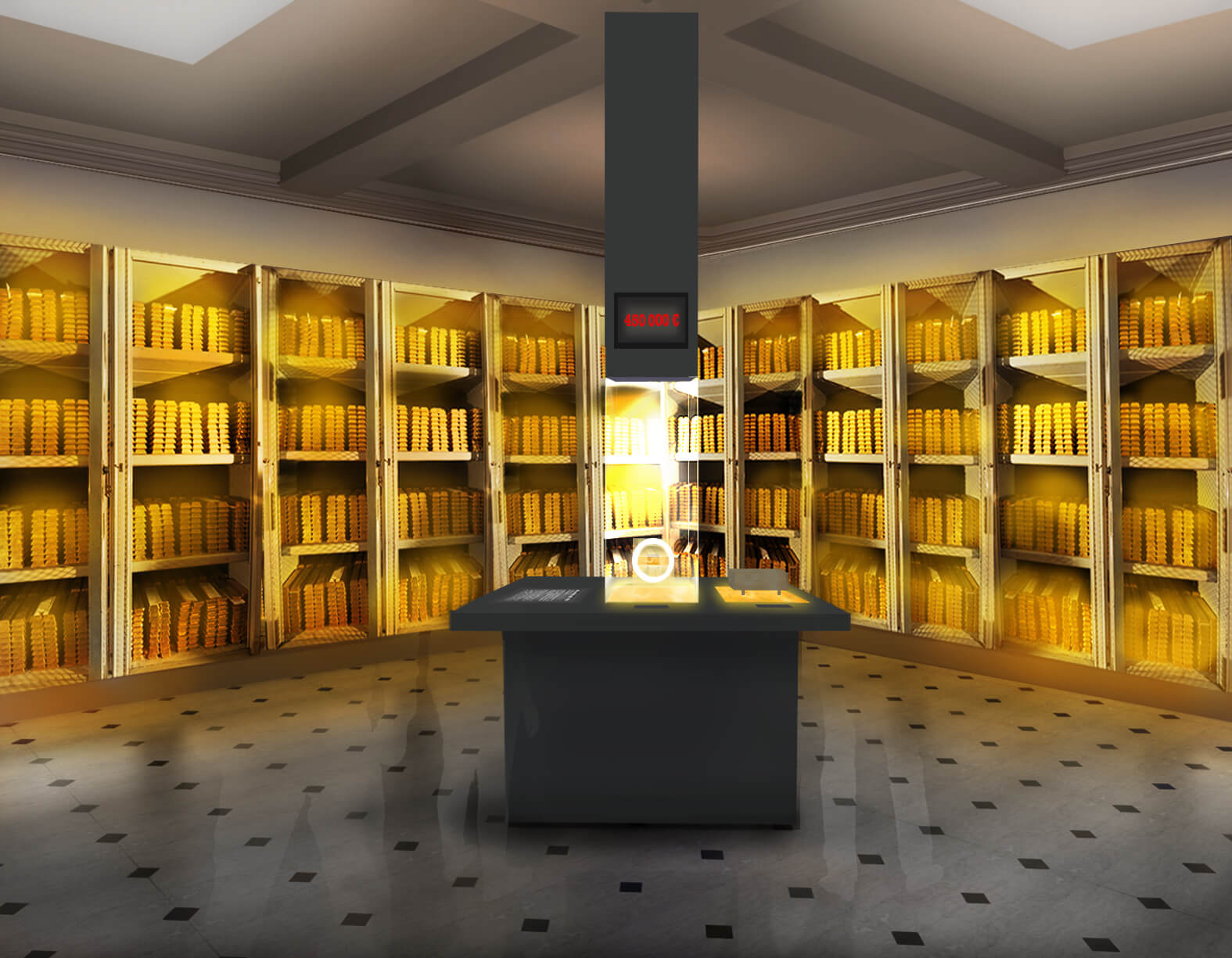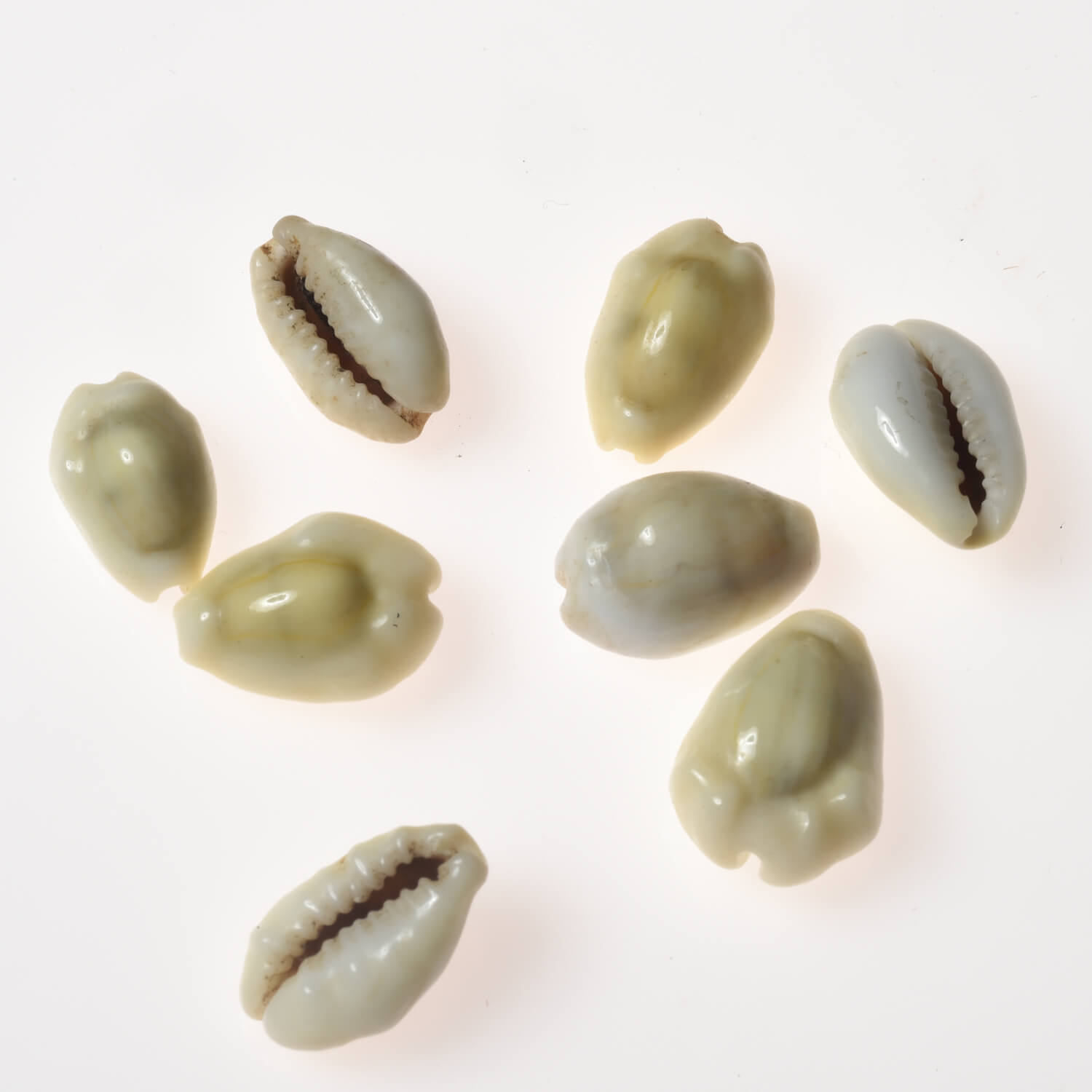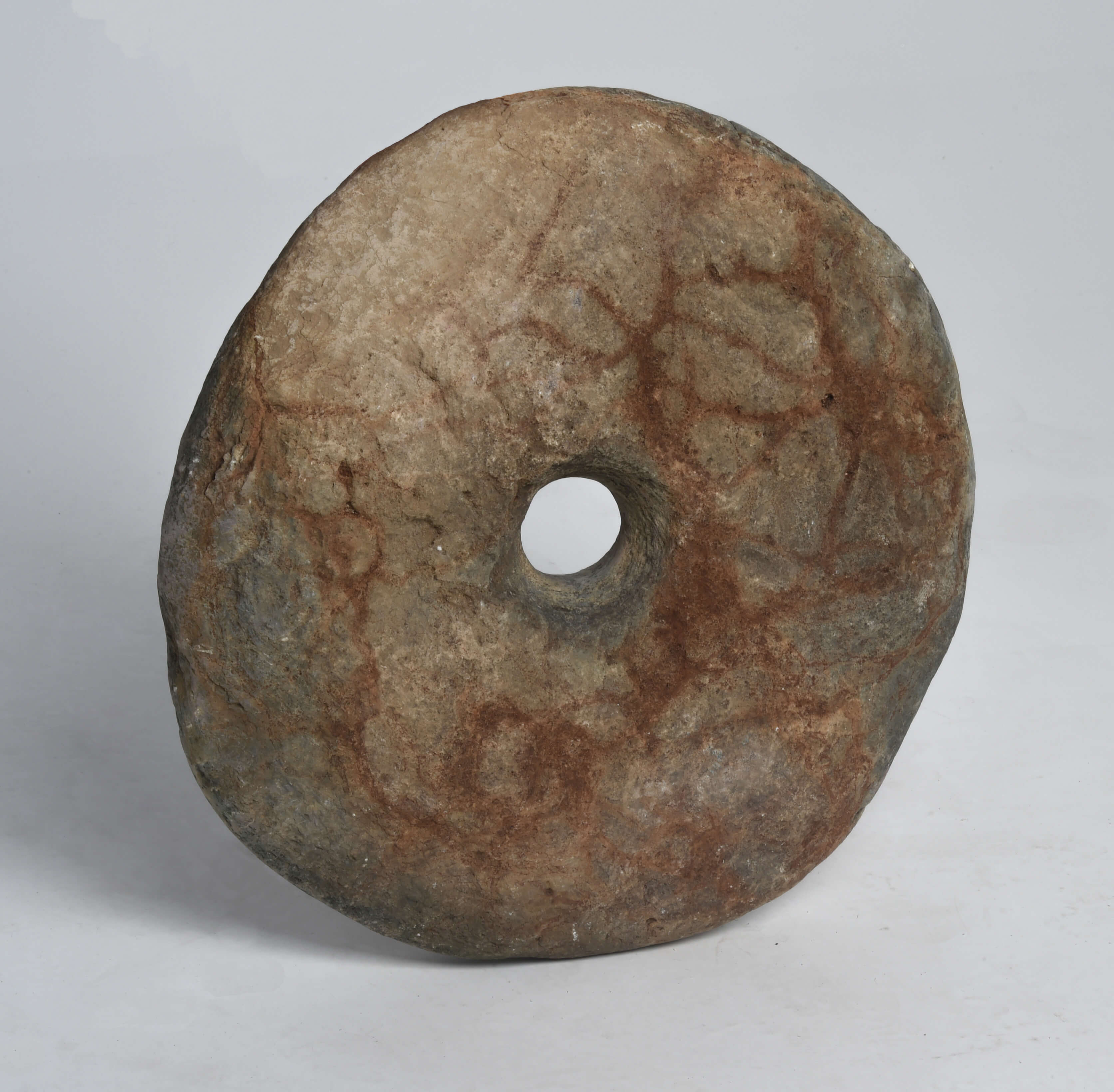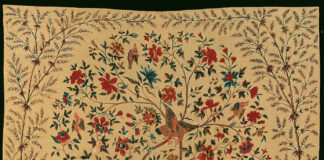Paris has now a museum dedicated to enomony in a 360 degree sense: In June 2019 Citéco, Cité de l’èconomie, i.e. City of the Economy opened its gates. The setting in the historical palace of Hotel Gaillard is unique: a former private house that housed a bank branch in the 1920s. Visitors will learn much about economy, money, and the history of Hotel Gaillard itself. The museum offers many interactive stations and games to understand better how our economy works.
1. History of Hotel Gaillard
Émile Gaillard (1821-1902) was characteristic of 19th century bourgeois dynasties. He was the representative of the family bank in Paris founded by his grandfather. Gaillard was very taken by Middle Age and Renaissance art and had had an amazing collection of furniture, decorative objects, tapestries and other works of art of the period. Emile Gaillard entrusted the young architect Jules Février (1842-1937) with building a mansion for him. The result, Hotel Gaillard, put him on the map and he was awarded the Grande Médaille d’architecture.
In the 20s, though, hotel Gaillard was converted into a branch office of the Banque de France. At the end of the First World War, the Banque de France was pursuing a policy of expansionism and opening bank branches all over the country. Hotel Gaillard had been for sale since 1904 but as no one wanted to buy it the bulding was sold off for 2 million francs which was something of a deal as it had cost 11 million to build.
Transforming this “Renaissance Mansion” into a bank branch required extensive work lasting 4 years from 1919 to 1923. The site was entrusted to Alphonse Defrasse, the architect and Jean-Henri Jansen the interior decorator. The Bank was definitely not going to give up such an original and fastuous building which was well suited to attracting the customers. Then again the house was not going to be a family house anymore, but for the use of members of the public, staff and the vaults. Such a new building needed to be functional and inspire customer confidence.
Alphonse Defrasse undertook the requisite restructuring by creating a hall for the public (called the Defrasse room), the vaults and administrative offices. The private residence in la rue de Thann merged with Hotel Gaillard to form new more functional rooms.
The historical rooms with such a remarkable decor were kept except for the gallery of paintings that overlooked the rue de Thann. The enormous main stairway lead to the offices that had been relocated in the former appartments and reception areas. Customers had to climb the stairway to reach the information desk (the former petit salon) and then on to the securities gallery for stock exchange transactions or to the public hall with its cubicles where staff can talk privately with customers.

2. The museum’s exhibition
Trade in goods and services the very foundation for economic endeavour
In everyday life we buy goods (such as a bicycle), or services (such as renting a bicycle), we buy or we sell. Trade in goods and services is the foundation for economic endeavour. People tend to specialise in one or another production sector in order to cater to consumer requirements. For transactions to take place we need to set values and avail ourselves of means of payment. What is it that makes trade values change? What role does the currency play? What does trade represent? What influence does trade of on economic development?

There’s a toaster right in the middle of Emile Gaillard’s dining room
Sequence 1 takes place in Emile’s private appartments and trade is explained in small rooms with superb fireplaces and panelled walling.
As soon as one enters the room the scene is set with two events that take up all the room in the dining room. One is an interactive game and the interesting and original history about an everday object, the toaster.
The component parts of the toaster just go to show that we can’t make our own toaster by ourselves as can be seen from the film about Thomas Thwaites. What looks like a very pedestrian object actually turns out to be a highly complex one with 400 parts made of all sorts of raw materials that we need to know how to produce them and assemble them. The young artist spent nine months running from one disused mine to to a plastics dump to get all the parts he needed for his project. He succeeded in making a very singular looking object that only worked for a few seconds before it melted down entirely.

Barter or money
The subject here is dealt with by a system involving 5 players. They all have to feed their chicks that never stop demanding something to eat and do so by exchanging with the other players. At the start, they can only barter and then use money to facilitate the game.
Actors: States, companies, banks…
An economy involves a number of ongoing interactions between stakeholders such as companies, banks, associations, the State or households (people living in the same housing unit) so basically everyone. Goods, services and money are exchanged and circulate freely between the stakeholders. What are the specifics for each stakeholder and how do they finance their requirements and what are the interdependencies between them?

Sequence 2 unfolds in the rooms painted red and visiotrs enter through a richly decorated antechamber with a rather original object: everyday objects are put through a scanner just like in an airport and visitors then see each separate stage of the process. After that we go forward into the ballroom and discover the role of the various economic actors.

The role of the State
To appreciate the role of the State as an economic actor a whole series of mechanisms describes forms of State intervention and invites the visitor to view the world as a diverse whole. A team game then invites visitors to identify the services funded by the State.
In the shoes of a banker
In order to materialize the role of the banks as economic stakeholders, the visitor is invited to act as a banker receiving customers, people who want a loan or who want to invest their savings. Thus the visitor has to do the role play and consider the profile of the customer and the risk factor for the bank.

The company tower
Companies are all different with respect to size, status and objectives but what they all have in common is that they want to cash in as best they can on how their products are going to be sold on the market. The company tower is overwhelming and shows how different they all are. All of the ground floor windows on all four sides provide access to portraits, slideshows and videos. 52 photos were taken by artists to portray diverse entrepreneurial situations. The “tower” is a see-through structure and offers three solutions: a two person game to implement company development strategies and do so via three variables (cost reduction, innovation and communication); an exercise to learn a bit about company accounting via the income and expenses; an audiovisual presenting six different companies.
Markets: The supply and demand situation
We acquire most of the goods and services we need on markets and they can be very diverse. So we have labour markets, property markets and finance markets. Buyers and sellers get together on these markets and work out the prices for the transactions. How are markets organized? What mechanisms are involved? and what are the operating rules?
Strategies background
Once visitors have had a chance to see the various kinds of markets thanks to the films, they are placed in a position to understand how things work thanks to simple manipulations. As the demiurge, they can manipulate two giant knobs representing supply and demand to get a better understanding as to how they set the scene for fixing prices and quantities on a given market. A team game can even be used to come to grips with the stock market if they want to.
Recovery or a liberal policy?
The efficiency of a market economy is discussed from the theoretical point of view. Discussing how markets operate is also an opportunity for deepening one’s understanding of the various facets of being an economist and also of the history of economic thought. A huge interactive fresco presents the main stakeholders in the history of economics. Then, with a set of questions the visitor can strike up an imaginary dialogue between two of the most eminent economists of the 20th century and whose theories are still being debated: John Maynard Keynes and Milton Friedman.
Instability: All sorts of turmoil
A market economy is subject to disruption and this can lead to a crisis. Market participant interdependencies can be a strength and also a weakness and this will also lead to fluctuations in economic endeavour. When a market expands production of goods and services tends to expand every year. But when there’s a recession they tend to contract. A crisis is a turning point for an economy at the start of a recession. How do all these processes fit in and what the end results?
Depression, recession, unemployment…
As soon as the sequence starts the visitor is “pushed around” and is invited to go into a big metal cylinder open at both ends and that’s when sound and light effects are used to characterise a crisis. From a slight recession to a deep one the visitor is placed in a position to know more about the causes, the kinds and the mechanisms of a crisis. Raw material prices rise, bubbles burst and the whole cohort of recession related events: lack of confidence, labour crisis and unemployment.
Imbalances
There are plenty of factors that can destabilize an economy: contraband, the “underground” economy, price increases in energy-producing raw materials, are some examples. An interactive game will invite invite 4 participants to do a role play whereby they are fishermen who are asked to resolve an imbalance in the use of natural marine resources to ensure that they are sustainable The set-up for this game is original and shows how the domino effect takes place and the interdependence of economic actors or how the failure of one market participant can bring the others down as well. The game also includes a life-saving knock-on effect so as to stop the process.
Four major crises during the 20th century

Four films show interviews that illustrate the specifics of the historical crises: hyperinflation in 1923 in Germany, the world crisis during the 30s, the oil shock in 1973 and then more recently the subprime crisis in 2007. Film excerpts (the Franck Capra film “It’s a wonderful life”) offers coping mechanisms in addition to standing back and looking at the harsh reality of a crisis.
Regulations
There are many objectives and they can relate to the short term or the longer term and there are specific instruments for all. How are they used and how efficient are they? Correcting imbalances, improving collective well being, trying to change behaviour patterns… How do objectives and regulatory instruments prevent disruption? What resources do governments have for regulating?
The role of public institutions
Budget policy, tax policy, witholding taxes are tools that governments have for regulating and steering production resources support innovation, stabilise economic activity, enhancing purchase power and reducing social inequalities.
The extent of intervention is dependent on policy and social choices from one country to another. Regulations are also promoted by European and international bodies.
Practical work
Once the visitor has grasped the various regulatory instruments and familiarised himself with trade rules he can go on to the the practical work and familiarise themselves with how to fund pensions according to two variables: age of retirement and pension entitlements. After that the visitor will be given the opportunity of changing the ECB policy rate so as to keep inflation as close to 2 per cent per annum as possible.
The “boardroom” for simulating decision making
At the heart of the public hall there are high walls and a half open space for 9 players at most or 4 players as a minimum can sit around a table. They will play the role of a negotiator representing a country and engage in multilateral negotiation on climate change. Objective: produce electricity by increasing renewable energy according to factor in a number of considerations: the objectives defined by the European Union, international agreements, budget, taxing non renewable energy… Contextualised images are projected on two giant screens.
Treasures: All kinds of money
In the basement there is the upper basement and the lower basement level that are not being used for storing money so as to show other treasures to the visitors. The safes have been changed into showcases and no longer house the valuables of the former Malesherbes branch customers. They present collector’s items. The original furniture and the booths that customers used to use are now being used as audiovisual.
There are ten booths that present all forms of money: production, circulation, how money is presented in films, art and literature, with a surprising piece written by Stefan Zweig on the “Souterraine”, the name given to the room that houses the gold reserves guarded by the Banque de France. Proto-money (shells, pearls) cheques and bank cards, all of which attest to how trade is organized and go into the details about economic and political history. Side views of Roman emperors and Kings of France engraved in metal that was used as the very first means of dissemination. Exceptional coins can be seen in showcases and especially the gold ecu of Saint Louis that was minted in 1266, or the very first franc in 1360, created to pay the ransom for King Jean le Bon,who was being kept prisoner by the English.
Three big machines show how coins were minted and how coinage production techniques have changed: an assignat press from the 18th century, an intaglio press that raises lettering and makes forging much harder and the famous press by Nicolas Thonnelier that replaced the ram press for striking coins.
The appeal of gold. A recess is dedicated to this precious metal and a real ingot is put on show (in a secure showcase) plus a false one weighing 12.5 kilos and measuring 26.5 cms so people can appreciate how heavy this metal really is. Live indications are also given for the price of gold and visitors can also view the bullion on photos at the Banque de France (photos are printed on the former safes).
Life cycle of a bank note. Starting with the raw material and the graphics, then printing and wear and tear or forging, we learn all there is to learn about the life of a banknote. The creation process is like a work of art as can be seen from the selection of iconic banknotes in true French style. More time is devoted to remarkable coins: the very first banknotes, the assignats, high value banknotes such as the Bonaparte 10,000 francs (issued in 1955). Visitors can also spend some time creating their own banknote that they will keep as a souvenir of their visit.
The website
The Citéco web site is both an educational website and a media as well while as a regular museum website it provides access to practical information on the museum and its cultural offering.
The Citéco website has been running since 2011, and was reworked recently. It enables visitors, teachers and special educators to find the teaching resources they need to prepare their classes and the public at large will be able to familiarise itself with economics.
The website proposes a whole range of resources that are updated regularly: videos, dataviz, games, bibliographies and filmographies. The resources deal with economics in the broad sense: work, sustainable development, European institutions, the history of thought, etc.
For more information on the museum go to the Citéco website.
This playlist gives you all Citéco educational videos so far.




